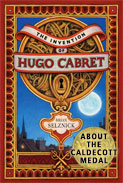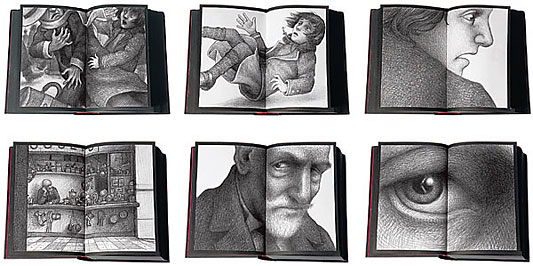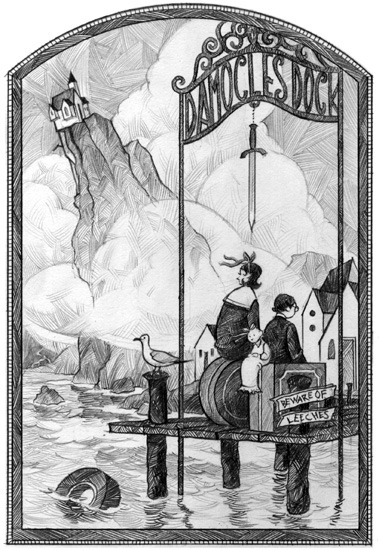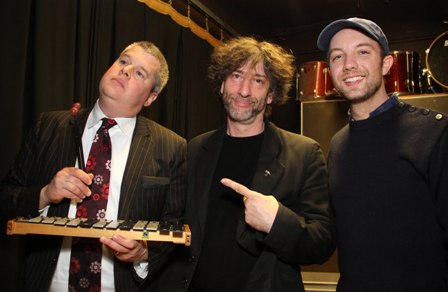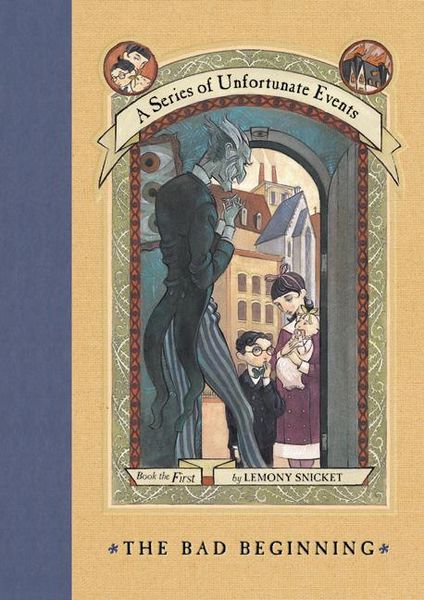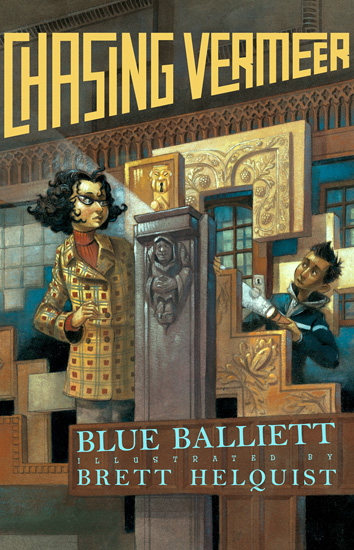Ardagh, Philip. A House Called Awful End. (The Eddie Dickens Trilogy)
When
eleven-year-old Eddie Dickens’ parents become ill, he is taken in by
his great-uncle and great-aunt and embarks on adventures that involve
strolling actors, St. Horrid’s Home for Grateful Orphans, and a carnival
float shaped like a giant cow.
Bellairs, John. The House with a Clock in its Walls.
A
boy goes to live with his magician uncle in a mansion with a clock
hidden in the walls which is ticking off the minutes to doomsday.
Byng, Georgia. Molly Moon’s Incredible Book of Hypnotism.
Unlucky
and unloved, Molly Moon, living in a dreary orphanage in a small
English town, discovers a hidden talent for hypnotism and hypnotizes her
way to stardom in New York city.
Colfer, Eoin. Artemis Fowl.
When
a twelve-year-old evil genius tries to restore his family fortune by
capturing a fairy and demanding a ransom in gold, the fairies fight back
with magic, technology, and a particularly nasty troll.
Coman, Carolyn. The Big House.
When
Ivy and Ray's parents are sent to jail, and the siblings are left in
the custody of their parent's accusers, they decide to look for evidence
that will "spring" their parents.
Dahl, Roald. Matilda.
Matilda
is a genius. Unfortunately, her family treats her like a dolt. Her
father is a crooked car-salesman and her mother is loud and obsessed
with bingo-obsessed. Matilda, with inspiration from the one person who
understands her (teacher Miss Honey) starts fighting for herself.
Dahl, Roald. The Witches.
A
young boy and his Norwegian grandmother, who is an expert on witches,
together foil a witches’ plot to destroy the world’s children by turning
them into mice.
Funke, Cornelia Caroline. The Thief Lord.
Two
brothers, having run away from an aunt who plans to adopt the younger
one, are sought out by a detective, but find shelter with Venice’s
“Thief Lord.”
Funke, Cornelia Caroline. Inkheart.
Twelve-year-old
Meggie learns that her father, who repairs and binds books for a
living, can "read" fictional characters to life when one of those
characters abducts them and tries to force him into service.
Gaiman, Neil. Coraline.
Looking
for excitement, Coraline ventures through a mysterious door into a
world that is similar, yet disturbingly different from her own, where
she must challenge a gruesome entity in order to save herself, her
parents, and the souls of three others.
Gaiman, Neil. The Graveyard Book.
After
the grisly murder of his entire family, a toddler wanders into a
graveyard where the ghosts and other supernatural residents agree to
raise him as one of their own.
Gaiman, Neil. Wolves in the Walls.
Giff, Patricia Reilly. Pictures of Hollis Woods.
A
troublesome twelve-year-old orphan, staying with an elderly artist who
needs her, remembers the only other time she was happy in a foster home,
with a family that truly seemed to care about her.
Goldman, William. The Princess Bride
Is there anyone who isn't in love with S. Morgenstern's classic tale of true love and high
adventure, the "good parts" version, abridged? It's got everything - romance, adventure,
kidnapping, an evil villain, lots of humor, and true love prevailing in the end.
Horowitz, Anthony. Stormbreaker
First book in a series about a 14-year-old boy named Alex Rider, who is an orphan. His uncle was killed on an assignment for MI6. The head of the agency puts Alex into a special one-week training program and then sends him off to take over his uncle's assignment. He risks life and limb to stop an evil genius who is planning to release a deadly virus with the introduction of his Stormbreaker computer.
Ibbotson, Eva. Dial-a-Ghost.
A family of nice ghosts protects a British orphan from the diabolical plans of his evil guardians.
Ibbotson, Eva. Island of the Aunts.
As
they get older, several sisters decide that they must kidnap children
and bring them to their secluded island home to help with the work of
caring for an assortment of unusual sea creatures.
Ibbotson, Eva. The Secret of Platform 13.
Odge
Gribble, a young hag, accompanies an old wizard, a gentle fey, and a
giant ogre on their mission through a magical tunnel from their island
to London to rescue their King and Queen’s son who had been stolen as an
infant.
Kurzweil, Allen. Leon and the Spitting Image.
Leon,
a fourth grader at The Ethical School, tries to outwit the school bully
and learn to sew for fanatical teacher Miss Cronheim, with unexpected
help from his final project – a doll with magical powers.
Nimmo, Jenny. Midnight for Charlie Bone: Children of the Red King.
Charlie
Bone’s life with his widowed mother and two grandmothers undergoes a
dramatic change when he discovers that he can hear people in photographs
talking.
Pullman, Philip. I Was a Rat.
A little boy turns life in London upside down when he appears at the house of a lonely old couple and insists he was a rat.
Wilson, N.D. 100 Cupboards.
After
his parents are kidnapped, timid twelve-year-old Henry York leaves his
sheltered Boston life and moves to small-town Kansas, where he and his
cousin Henrietta discover and explore hidden doors in his attic room
that seem to open onto other worlds.









 Here is the finished travel book. It is a very simple pamphlet stitch, where I cross over stitches from each section.
Here is the finished travel book. It is a very simple pamphlet stitch, where I cross over stitches from each section.








